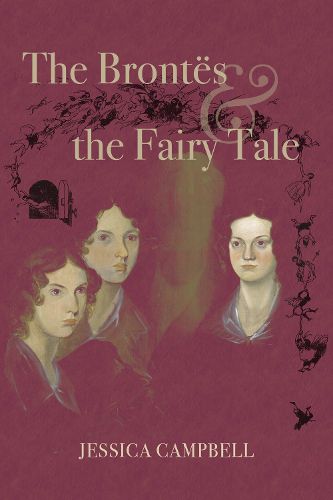Readings Newsletter
Become a Readings Member to make your shopping experience even easier.
Sign in or sign up for free!
You’re not far away from qualifying for FREE standard shipping within Australia
You’ve qualified for FREE standard shipping within Australia
The cart is loading…






The Brontes and the Fairy Tale is the first comprehensive study devoted to the role of fairy tales and folklore in the work of Charlotte, Emily, Anne, and Branwell Bronte. It intervenes in debates on genre, literary realism, the history of the fairy tale, and the position of women in the Victorian period. Building on recent scholarship emphasizing the dynamic relationship between the fairy tale and other genres in the nineteenth century, the book resituates the Brontes' engagement with fairy tales in the context of twenty-first-century assumptions that the stories primarily evoke childhood and happy endings. Jessica Campbell argues instead that fairy tales and folklore function across the Brontes' works as plot and character models, commentaries on gender, and signifiers of national identity.
Scholars have long characterized the fairy tale as a form with tremendous power to influence cultures and individuals. The late twentieth century saw important critical work revealing the sinister aspects of that power, particularly its negative effects on female readers. But such an approach can inadvertently reduce the history of the fairy tale to a linear development from the "traditional" tale (pure, straight, patriarchal, and didactic) to the "postmodern" tale (playful, sophisticated, feminist, and radical). Campbell joins other contemporary scholars in arguing that the fairy tale has always been a remarkably elastic form, allowing writers and storytellers of all types to reshape it according to their purposes.
The Brontes are most famous today for Jane Eyre and Wuthering Heights, haunting novels that clearly repurpose fairy tales and folklore. Campbell's book, however, reveals similar repurposing throughout the entire Bronte oeuvre. The Brontes and the Fairy Tale is recursive: in demonstrating the ubiquity and multiplicity of uses of fairy tales in the works of the Brontes, Campbell enhances not only our understanding of the Brontes' works but also the status of fairy tales in the Victorian period.
$9.00 standard shipping within Australia
FREE standard shipping within Australia for orders over $100.00
Express & International shipping calculated at checkout
The Brontes and the Fairy Tale is the first comprehensive study devoted to the role of fairy tales and folklore in the work of Charlotte, Emily, Anne, and Branwell Bronte. It intervenes in debates on genre, literary realism, the history of the fairy tale, and the position of women in the Victorian period. Building on recent scholarship emphasizing the dynamic relationship between the fairy tale and other genres in the nineteenth century, the book resituates the Brontes' engagement with fairy tales in the context of twenty-first-century assumptions that the stories primarily evoke childhood and happy endings. Jessica Campbell argues instead that fairy tales and folklore function across the Brontes' works as plot and character models, commentaries on gender, and signifiers of national identity.
Scholars have long characterized the fairy tale as a form with tremendous power to influence cultures and individuals. The late twentieth century saw important critical work revealing the sinister aspects of that power, particularly its negative effects on female readers. But such an approach can inadvertently reduce the history of the fairy tale to a linear development from the "traditional" tale (pure, straight, patriarchal, and didactic) to the "postmodern" tale (playful, sophisticated, feminist, and radical). Campbell joins other contemporary scholars in arguing that the fairy tale has always been a remarkably elastic form, allowing writers and storytellers of all types to reshape it according to their purposes.
The Brontes are most famous today for Jane Eyre and Wuthering Heights, haunting novels that clearly repurpose fairy tales and folklore. Campbell's book, however, reveals similar repurposing throughout the entire Bronte oeuvre. The Brontes and the Fairy Tale is recursive: in demonstrating the ubiquity and multiplicity of uses of fairy tales in the works of the Brontes, Campbell enhances not only our understanding of the Brontes' works but also the status of fairy tales in the Victorian period.